Location: Princeton University, New Jersey
Date: March 2017
Curators: J. Michael Padgett
Services Provided: Exhibition Design, Construction and Fabrication Documents, Color Specs
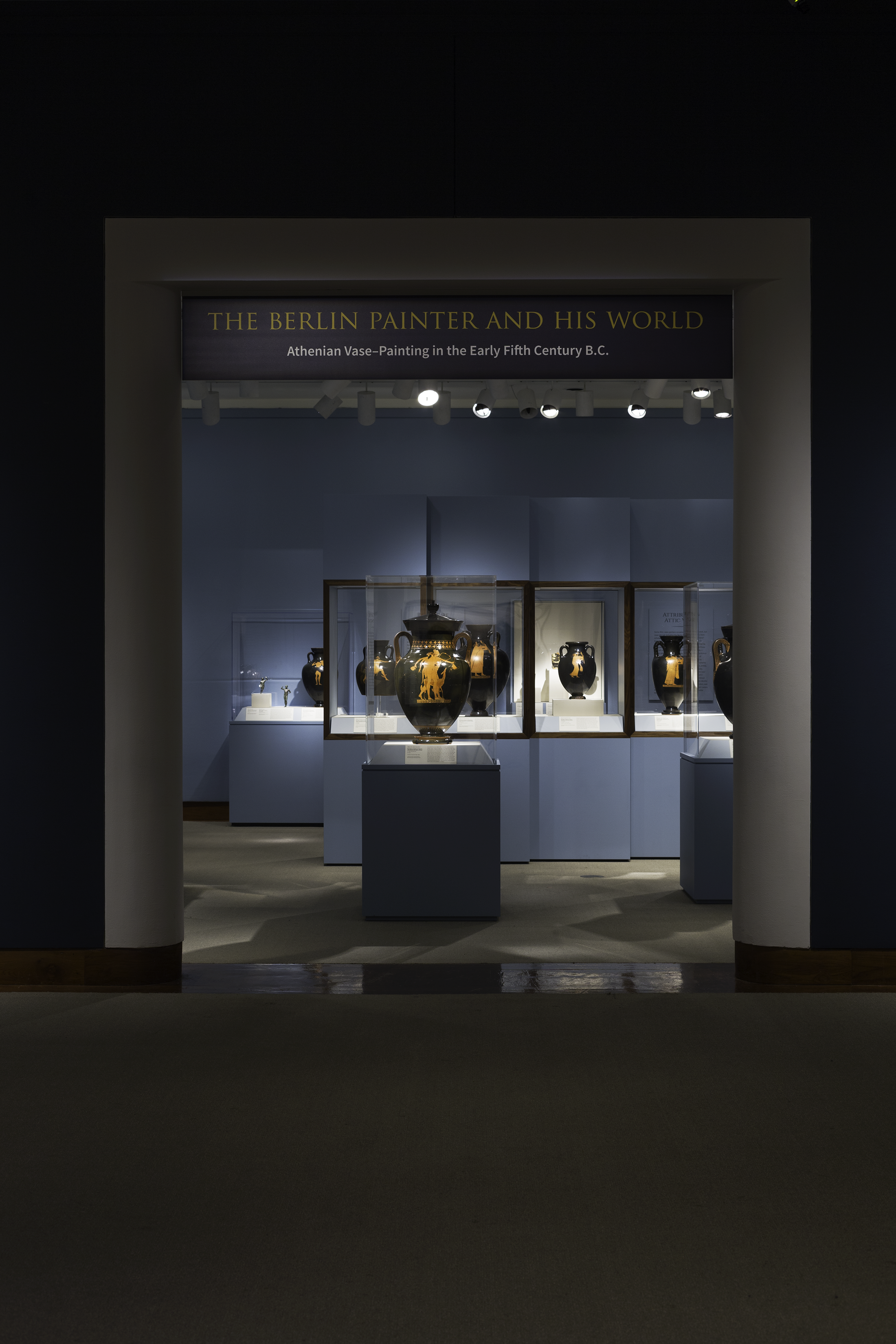

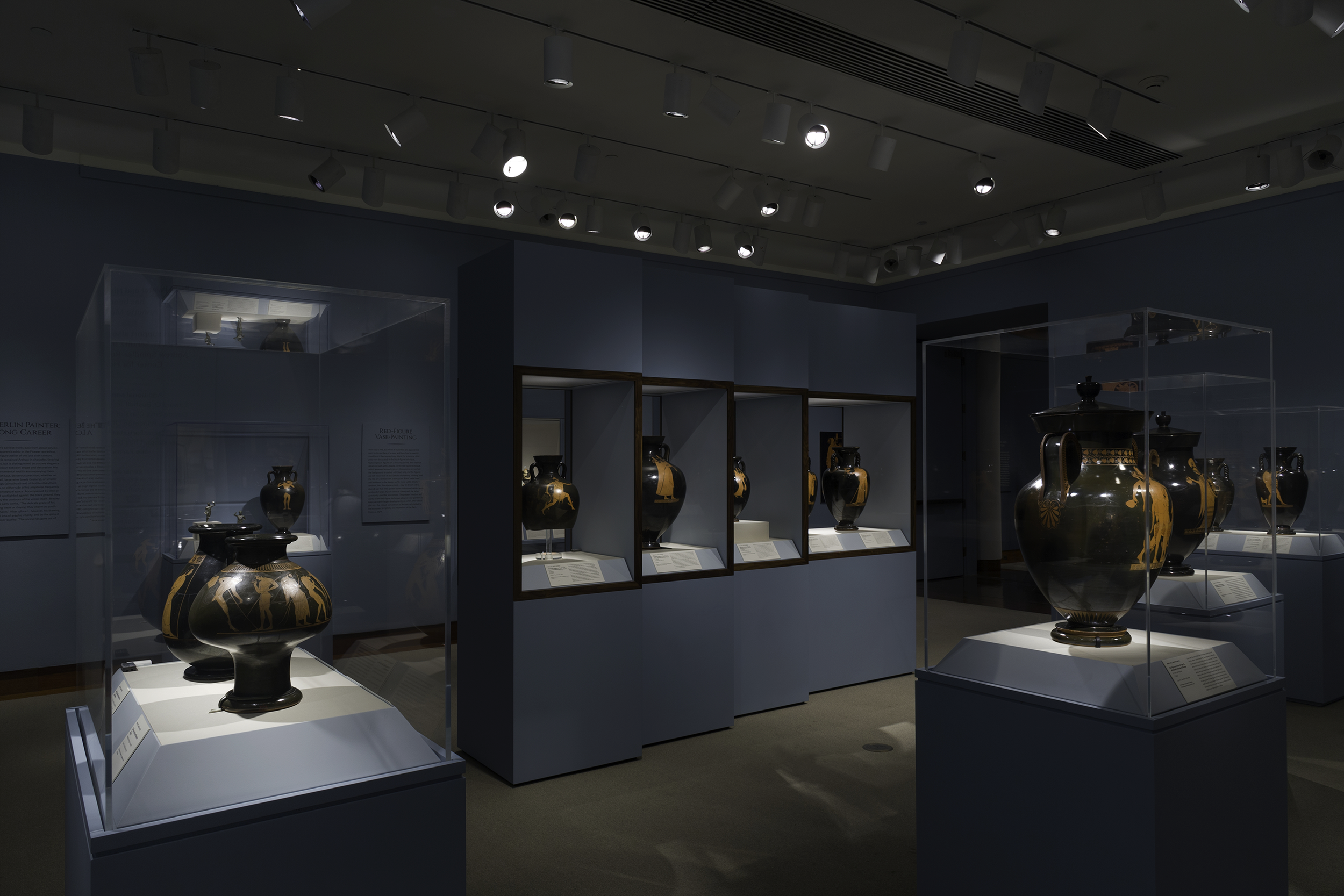
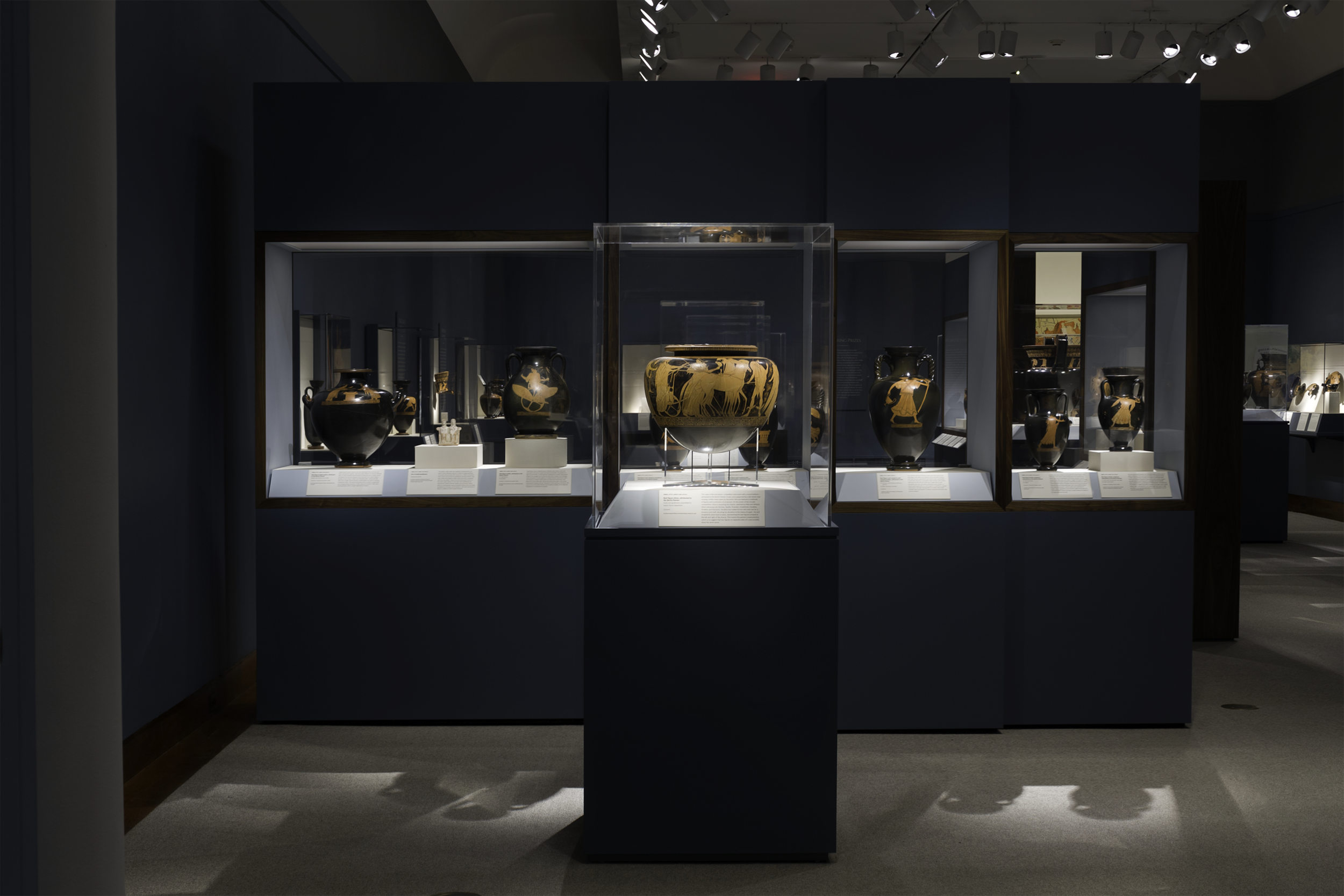







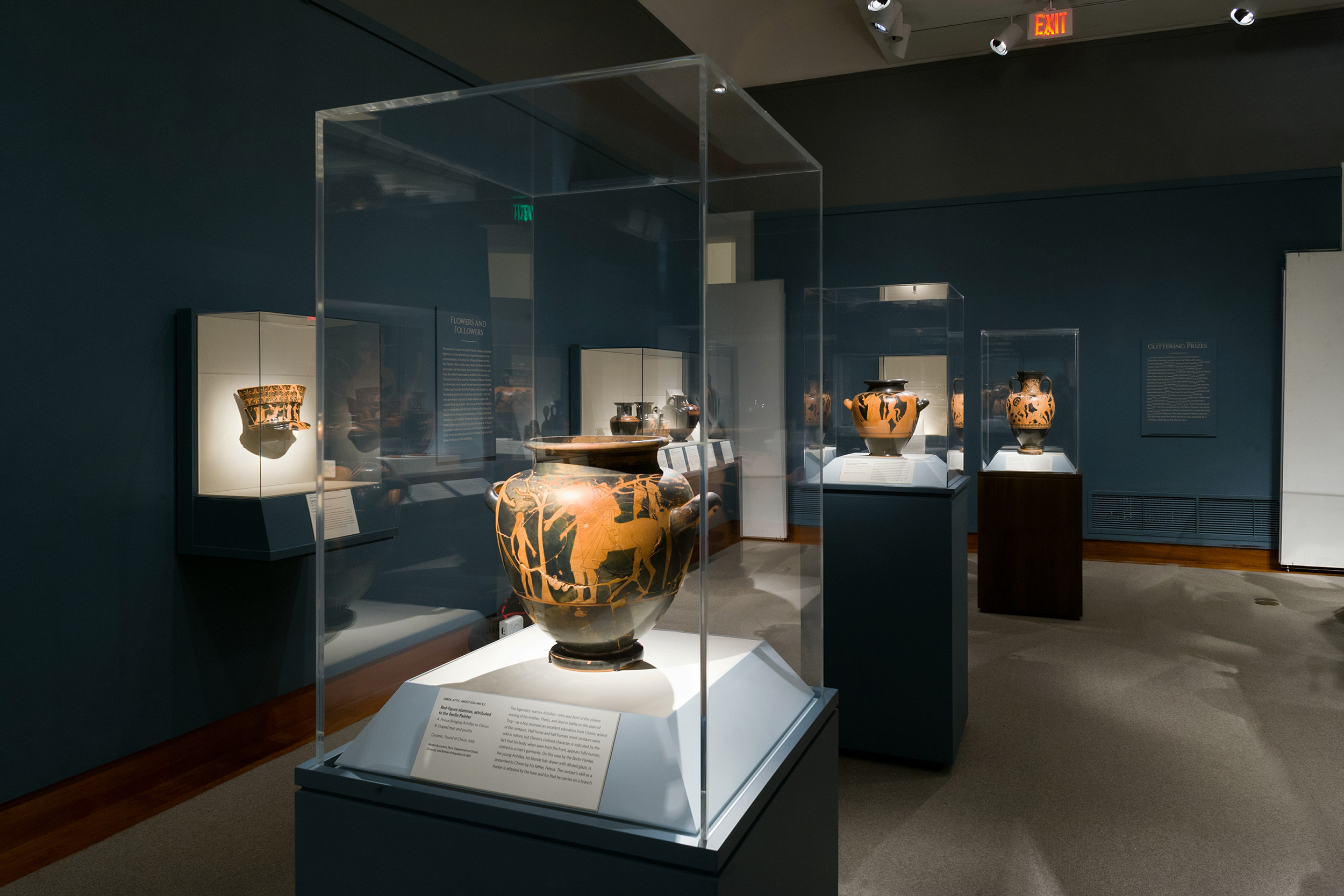
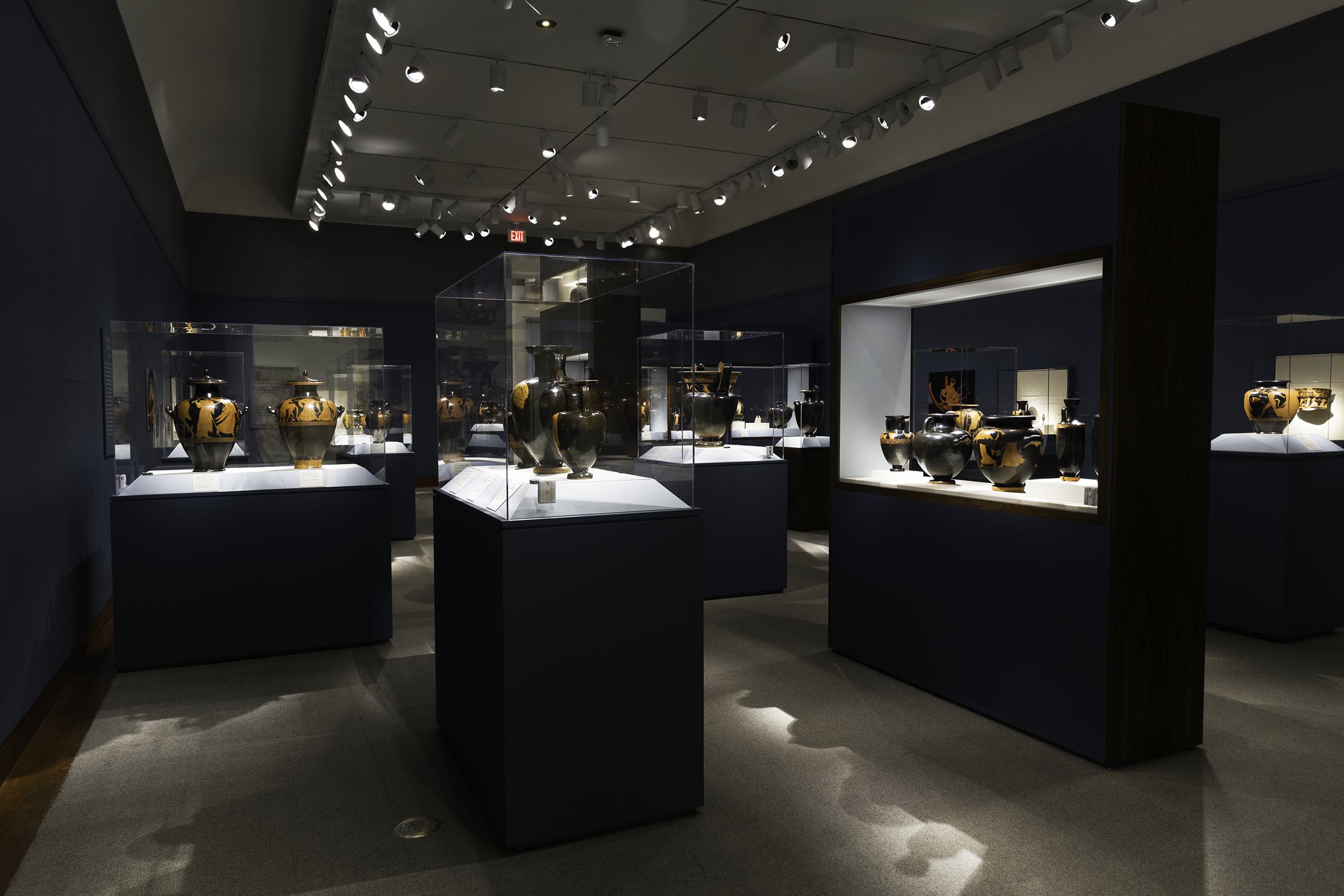
Excerpt From PUAM Press Release
This spring, the Princeton University’s Art Museum celebrates on the art and archaeology of ancient Greece and Rome in ideals of reason, proportion, and human dignity. The major international loan exhibition, The Berlin Painter and His World, celebrates Princeton University’s focus on classical studies.
The exhibition features eighty-four objects, fifty-four of which were attributed to an anonymous red-figure vase-painter named the Berlin Painter. The oxford Scholar Sir John D. Beazley (1885-1970) started to compile a list of vases from individual painters, paying extreme attention to everything detail — from the shape, subject, and decorative scheme to the smallest details made unconsciously, rendered ears, ankles, drapery folds. Some critiques argued that it was impossible to distinguish each vase by the following methodology, but with the past knowledge an experience with rigorous application, the scholar confidently proved possible to identifying the following works and categorized individual vase-painters and to date of creations more closely. However, he ran into many fine vases that left no signature by the artist like those pieces of the Berlin Painter in the exhibition.
The Berlin Painter’s earliest work date about 505 B.C. and his style is distinguished by a suave elegance and a palpable tension between shape and decoration. The artist’s principal red-figure highlights his work from the other century the Attic pots were that were decorated in the black-figure technique with red clay ground. In contrary, Berlin Painter’s work is inverted as the background is coated with black slip and figures are left “reserved” in red. The robust conventions of the Archaic art began to yield to the increasing simplicity and naturalism of the Early Classical Style as the inverted process allowed greater freedom and clarity to keep vase-painters in pace with larger developments.
The vase painter lived in Athens where many vases attributed to him and have been found at other Greek sites as well as Italy. Thousands of Attic vases were discovered in Italy, and the most frequent destination of the Berlin Painter’s work was Etruria, the central Italian homeland of the Etruscans and some tombs at Vulci, Cerveteri, and Chiusi. Although influenced by Greek religion and material culture, the Etruscans were ethnically and linguistically distinct, and their appetite for Attic pottery served their own traditions and practices.
“Depictions of myths, cult, and daily life on red-figure vases provide important insights into Greek culture in this period, but iconography is sterile unless considered alongside the nuances of style, both of the period and of individual artists. Although he would have been considered a humble craftsman within Athenian society, the painstaking identification of the surviving oeuvre of the Berlin Painter now affords him a place among the finest artists of ancient Greece.”

